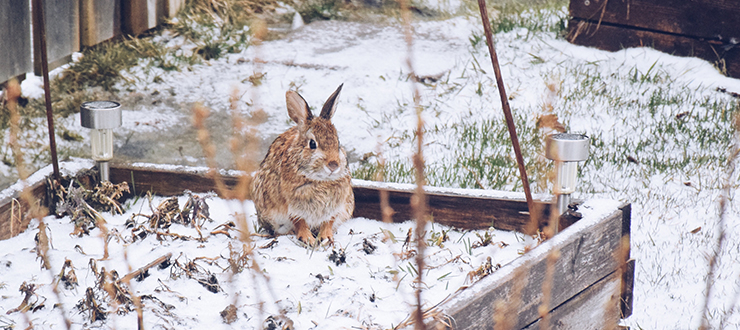
Tips for Protecting Your Plants In Cold Weather
Harsh, biting temperatures can not only do a number on bare skin, like hands and noses, but they can also do a number on your plants. Freezing temperatures can scald plants, freeze roots, damage foliage and even kill them outright. Usually, Mother Nature can prep plants for winter with fall rains and heavy blankets of snow. But you can’t always count on Mother Nature or her timing. Instead, take steps to protect your plants yourself.
Wet Soil Before a Freeze
The first step to preparing your plants for cold temperatures is to water them thoroughly. Water acts as an insulator, plumping up the plant’s cells. And, according to Today’s Homeowner, moist soil tends to stay warmer than dry soil so make sure to stick to a regular watering schedule, even in winter.
Mulch-In Plants
Mulch acts as a nice blanket to cover delicate plant roots. It also helps enhance the soil as it breaks down over the long winter months. Apply about three inches of mulch, being careful to leave space around stems for airflow. A word of note, Gardening Know How warns that if your area rarely sees temperatures drop below freezing, mulching around your plants will prohibit them from going dormant, leaving any new growth susceptible to frost damage.
Wrap Tree Trunks
Sunscald, along with rodents and deer looking for late-winter lunch, can damage tree trunks over the winter. To minimize the damage, wrap a trunk in Kraft paper or hardware cloth up to the first branch to detour voles and rabbits and protect it from sunscald. North Dakota State University suggests spraying the branches with a repellant to keep deer away.
Mound Rose Bushes
Roses are a beautiful centerpiece for your garden but need protection in areas where winters are mild. Don’t prune the top of the bush but remove the leaves. Tie the bush with twin and mound soil around the crown about 10 to 12 inches high. HGTV suggests surrounding the crown with a wire hoop to form a collar and filling it with leaves. Burlap can be wrapped around the collar for extra protection.
Put Landscape Plants to Bed
Adding a layer of straw bedding to your flower beds can protect bulbs over the winter months. Straw is less expensive than mulch and will help to cover bare spots, protecting the soil from temperature fluctuations, while still allowing moisture to seep through. Farmer’s Almanac suggests cutting perennials and flowering shrubs back and applying three inches of straw.
Stake Delicate Plants
If you have perennials and shrubs that shouldn’t be cut back, like hydrangea and azalea, you can use the collar method to insulate them from the cold. The collar, or cage, can also provide support for delicate stems and branches.
Protecting your plants from winter’s freeze will help them start the spring strong. Plus all of the mulch and straw will help keep warm-weather weeds down, along with some help from Ragan & Massey. Our herbicides, like RM18 and Compare-N-Save Quick Acting Weed & Grass Killer, eliminate unwanted weeds without harming the soil. It can be used to establish a garden, to prep flower and garden beds and in mulch beds.